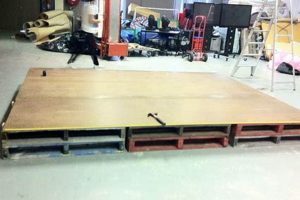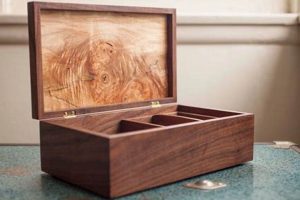A self-assembled storage structure, typically constructed from timber, designed for the systematic organization of footwear is the core concept. Such a unit allows for convenient storage and accessibility of shoes, preventing clutter and preserving their condition. An example includes a tiered structure built at home using lumber, screws, and basic tools, tailored to specific space requirements and aesthetic preferences.
The benefits of creating a personalized storage solution are multifaceted. It promotes home organization, reduces tripping hazards, and extends the lifespan of footwear by protecting it from damage. Historically, handcrafted versions offered a cost-effective solution to storage needs, and continue to provide resourcefulness and creativity. Its adaptability to available space and personal design preferences makes it an important feature in optimizing living areas.
The following sections will detail material selection, construction techniques, design considerations, and finishing options relevant to creating a functional and aesthetically pleasing shoe storage system. Emphasis will be placed on practical advice and safety precautions to ensure a successful and satisfying building experience.
Tips for Constructing a Shoe Storage Unit
Effective design and careful execution are critical to a successful project. The following tips provide guidance for building a robust and aesthetically pleasing shoe storage unit.
Tip 1: Material Selection. Choose lumber appropriate for the intended load and environment. Consider hardwoods like oak or maple for durability, or softwoods like pine or fir for cost-effectiveness. Ensure the wood is properly dried to prevent warping or cracking.
Tip 2: Accurate Measurements. Precise measurements are essential for proper fit and stability. Measure the available space carefully and account for the thickness of the lumber when calculating dimensions. Use a level and square to ensure accurate cuts.
Tip 3: Secure Joinery. Employ strong joinery techniques such as screws, dowels, or mortise and tenon joints to ensure the unit’s structural integrity. Consider using wood glue in conjunction with fasteners for added strength.
Tip 4: Proper Sanding. Sand all surfaces smooth before assembly and finishing. Start with coarse grit sandpaper to remove imperfections and gradually move to finer grits for a smooth finish. This improves the look and protects against splinters.
Tip 5: Effective Finishing. Apply a protective finish to enhance the wood’s appearance and protect it from moisture and wear. Consider paint, stain, varnish, or polyurethane, depending on the desired aesthetic and level of protection needed.
Tip 6: Sturdy Shelf Spacing. Determine ideal shelf spacing based on the types and heights of shoes to be stored. Account for boots or high-top sneakers. Too little spacing limits storage capacity, while too much wastes vertical space.
Tip 7: Reinforce the Structure. Assess where the greatest structural stress will be and apply reinforcement if necessary. Braces and extra supports can increase longevity.
Adhering to these tips enhances the finished product’s functionality, aesthetic appeal, and structural durability, ensuring a worthwhile addition to home organization.
The following conclusion summarizes the preceding guidelines and offers final thoughts on designing and constructing a personalized shoe storage solution.
1. Material Durability
The longevity and structural soundness of a self-constructed timber footwear organization unit are directly proportional to the durability of the materials selected. Material choices dictate the rack’s resistance to physical stress, moisture, and potential pest infestation, factors which collectively determine its lifespan. Inferior materials, such as improperly treated softwoods, may exhibit warping, cracking, or premature decay, rendering the unit structurally unsound and functionally inadequate. By contrast, hardwoods or treated lumber provide enhanced resistance to wear and tear, significantly extending the rack’s usability.
For instance, a framework constructed from untreated pine exposed to fluctuating humidity levels is likely to undergo dimensional changes, potentially compromising joint integrity and overall stability. Conversely, a similar unit utilizing kiln-dried oak, sealed with a water-resistant finish, will maintain its form and function over an extended period, even in environments prone to moisture. The selection of appropriate hardware, such as rust-resistant screws and hinges, further contributes to the rack’s overall resilience and mitigates the risk of component failure due to corrosion.
In summary, the correlation between material durability and the enduring performance of a do-it-yourself timber footwear organization structure cannot be overstated. The selection of high-quality, appropriately treated materials represents a fundamental prerequisite for ensuring the rack’s structural integrity, functionality, and aesthetic appeal over its intended lifespan. Neglecting this aspect inevitably leads to compromised performance and diminished value.
2. Structural Integrity
Structural integrity is paramount in the design and construction of any load-bearing structure, including a self-assembled timber footwear organization unit. The ability of the unit to withstand applied forces, maintain its form, and resist failure directly depends on the principles of structural engineering incorporated into its design and execution. Compromised structural integrity leads to instability, potential collapse, and functional inadequacy.
- Joint Strength and Stability
The strength and stability of the joints that connect the various wooden components dictate the overall structural integrity. Weak joints, such as those inadequately fastened or poorly aligned, represent points of potential failure under load. Techniques like mortise and tenon, dovetail joints, or properly executed screw and glue joints are critical for distributing stress and preventing separation. Insufficient joint strength can lead to racking, wobbling, or complete collapse of the unit.
- Load Distribution and Support
The distribution of weight across the structure is crucial for maintaining stability. Shelves must be adequately supported to prevent sagging or bending under the weight of footwear. The spacing and placement of vertical supports or bracing influence the load-bearing capacity. Uneven load distribution or inadequate support can result in localized stress concentrations, leading to deformation or structural failure.
- Material Properties and Selection
The inherent properties of the chosen timber influence the unit’s resistance to bending, compression, and shear forces. The selection of wood species with appropriate strength and stiffness characteristics is therefore essential. Factors such as wood density, grain orientation, and the presence of knots or imperfections affect its load-bearing capacity. Selecting undersized or flawed timber compromises the structural integrity of the unit.
- Bracing and Reinforcement
The strategic addition of bracing or reinforcement elements can significantly enhance the structural integrity of a footwear organization unit. Diagonal braces, corner gussets, or additional vertical supports provide added resistance to racking and twisting forces. Reinforcement is particularly important in areas subject to high stress concentrations or where joint strength is limited. Insufficient bracing can result in instability and premature failure, especially under heavy loads or during movement.
The incorporation of sound structural principles is not merely an aesthetic consideration; it is a fundamental requirement for ensuring the safety, durability, and long-term functionality of a timber footwear organization structure. Careful attention to joint strength, load distribution, material properties, and reinforcement techniques is essential for creating a stable and reliable storage solution.
3. Dimensional Accuracy
Dimensional accuracy constitutes a critical parameter in the successful fabrication of a self-constructed timber footwear organization unit. Deviations from specified dimensions in component pieces directly influence the overall structural integrity, aesthetic appearance, and functional efficacy of the finished product. The cumulative effect of even minor inaccuracies can result in a misaligned or unstable rack, reduced storage capacity, and an aesthetically displeasing outcome. The precision of each cut, joint, and assembly directly correlates with the unit’s ability to meet its intended purpose and integrate seamlessly within its intended environment.
Consider a scenario where the shelf supports are cut shorter than the specified length by a mere quarter of an inch. In isolation, this may seem insignificant. However, when four such supports are assembled, the cumulative error results in a shelf that sits a full inch lower than intended. This reduced clearance may prevent the storage of taller shoes or boots, diminishing the rack’s utility. Furthermore, variations in the dimensions of the frame components can induce racking or twisting, compromising the unit’s stability and potentially leading to premature failure. The adoption of precise measuring tools, coupled with meticulous cutting techniques, minimizes these risks and ensures consistent, repeatable results. Verification of dimensions at each stage of construction allows for timely correction of errors before they become compounded, mitigating rework and material wastage.
In summation, dimensional accuracy is not merely a matter of cosmetic concern; it is a fundamental prerequisite for achieving a structurally sound, functionally efficient, and aesthetically pleasing self-assembled timber footwear organization unit. The investment of time and effort in ensuring precise measurements and cuts yields significant returns in terms of enhanced durability, improved usability, and a higher-quality finished product. Lack of attention to detail in this area introduces inherent instability, undermines the overall purpose of the unit, and detracts from its value as a storage solution.
4. Design Aesthetics
Design aesthetics directly influence the perceived value and integration of a self-constructed timber footwear organization unit within a living space. The visual appeal of the rack, encompassing its form, finish, and detailing, contributes significantly to its overall utility and acceptance. A well-designed unit enhances the surrounding environment, acting not merely as a storage solution but also as a complementary design element. Conversely, a poorly conceived aesthetic detracts from the space and undermines the perceived value of the storage function. The selection of design features, such as wood type, joinery style, and finishing techniques, dictate the rack’s stylistic compatibility with the existing dcor.
Consider a minimalist apartment characterized by clean lines and neutral tones. A rack constructed from unfinished, rough-hewn lumber would likely clash with this aesthetic, appearing out of place and visually discordant. In contrast, a rack crafted from smooth, light-toned wood with concealed joinery and a matte finish would seamlessly blend with the environment, enhancing its visual appeal and reinforcing the minimalist design theme. Similarly, a rustic-themed home would benefit from a rack employing reclaimed wood, exposed joinery, and a distressed finish, complementing the existing design language and adding to the space’s overall character. Effective aesthetic design also includes considerations for proportionality, balance, and visual rhythm, ensuring that the rack does not dominate the space but rather contributes harmoniously to the overall composition.
In conclusion, design aesthetics are not merely superficial considerations; they are integral to the successful integration and perceived value of a timber footwear organization structure. A thoughtful and deliberate approach to design aesthetics enhances the rack’s visual appeal, ensures its compatibility with the surrounding environment, and elevates its function beyond simple storage to that of a contributing design element. Neglecting this aspect diminishes the rack’s overall value and compromises its acceptance within the intended living space.
5. Space Optimization
Space optimization, in relation to a self-assembled timber footwear organization unit, signifies the efficient and effective use of available physical volume. This principle addresses the challenge of maximizing storage capacity within a confined area, promoting order and accessibility. The design and construction of a rack must carefully consider spatial constraints to avoid impeding movement and ensure a harmonious integration within the designated environment.
- Vertical Expansion
Vertical expansion represents a key strategy for optimizing limited floor space. Constructing a unit that extends upwards, rather than outwards, allows for greater storage capacity without increasing the footprint. Multi-tiered designs capitalize on unused vertical space, accommodating a larger number of shoes in a compact arrangement. Example: Utilizing a narrow but tall rack in an entryway closet maximizes storage while minimizing obstruction.
- Adjustable Shelving
Incorporating adjustable shelving enhances adaptability to diverse footwear sizes and types. Variable shelf heights accommodate boots, heels, and sneakers, allowing for efficient utilization of vertical space. This feature ensures that no space is wasted on overly large compartments or restricted by inflexible configurations. Example: A rack with adjustable shelves can adapt to store both children’s shoes and adult boots.
- Corner Utilization
Corner spaces often represent underutilized areas within a room. Designing a rack specifically to fit into a corner maximizes storage potential and transforms an otherwise neglected space into a functional zone. Corner units can be angled or curved to conform to the room’s geometry, optimizing the flow and usability of the area. Example: A triangular-shaped rack nestled into a corner provides accessible storage without impeding foot traffic.
- Integrated Storage Features
Integrating additional storage features within the rack design further enhances space optimization. Incorporating drawers, shelves, or compartments for accessories such as shoe polish, socks, or keys maximizes the functionality of the unit and reduces clutter. This holistic approach to storage streamlines organization and reduces the need for supplementary storage solutions. Example: A rack with a built-in drawer for storing shoe cleaning supplies keeps everything organized in one location.
The aforementioned facets highlight the interconnectedness of design choices and efficient utilization of space within a self-assembled timber footwear organization unit. The objective is to maximize storage capacity without compromising functionality or creating spatial obstructions. By carefully considering vertical expansion, adjustable shelving, corner utilization, and integrated storage features, the design can yield an optimized storage solution that effectively addresses spatial constraints and promotes a more organized and aesthetically pleasing environment.
6. Surface Treatment
Surface treatment plays a pivotal role in the construction and longevity of a self-assembled timber footwear organization unit. The application of protective coatings or finishes directly influences the unit’s resistance to environmental factors, wear and tear, and aesthetic appeal. The selection and execution of surface treatments are, therefore, critical considerations for maximizing the rack’s durability and functional lifespan.
- Protection Against Moisture
Moisture penetration represents a significant threat to timber structures. Untreated wood absorbs moisture, leading to swelling, warping, and eventual decay. Surface treatments such as varnish, lacquer, or polyurethane form a barrier that repels water and prevents absorption. This protective layer significantly extends the lifespan of the footwear organization unit, particularly in environments with high humidity or potential exposure to spills. Example: Applying a marine-grade varnish to a shoe rack intended for use in a mudroom protects it from water damage and extends its durability.
- Resistance to Abrasion and Scratches
Footwear, by its nature, subjects storage surfaces to abrasion and potential scratching. Durable surface treatments enhance the wood’s resistance to these forms of wear, preserving the aesthetic appearance of the unit over time. Hard-wearing finishes, such as epoxy or catalyzed varnishes, create a resilient layer that withstands friction and impact. This prevents the surface from becoming marred by shoe soles or accidental contact. Example: A catalyzed varnish applied to the shelves of a shoe rack resists scratches from shoe buckles and keeps the surface looking new.
- Enhancement of Aesthetic Appeal
Surface treatments contribute significantly to the visual appeal of a timber footwear organization unit. Stains, paints, and clear finishes enhance the natural grain of the wood or introduce desired color tones. Proper application of these treatments creates a smooth, uniform surface that complements the overall design aesthetic. The choice of finish (e.g., matte, satin, gloss) further refines the unit’s appearance and integrates it seamlessly within its environment. Example: Applying a dark walnut stain followed by a satin polyurethane finish to a shoe rack enhances the wood grain and provides a sophisticated appearance.
- Prevention of Biological Degradation
Certain surface treatments incorporate biocides or preservatives that protect timber from fungal decay, insect infestation, and other forms of biological degradation. These treatments are particularly important for units constructed from susceptible wood species or intended for use in environments conducive to microbial growth. Preservative treatments penetrate the wood fibers, rendering them resistant to attack by wood-boring insects or decay fungi. Example: Treating a shoe rack constructed from cedar with a borate-based preservative protects it from insect damage and extends its lifespan.
The aforementioned surface treatments are fundamentally linked to the longevity, functionality, and aesthetics of a do-it-yourself timber footwear organization structure. The selection and proper application of the selected finish is not just an aesthetic consideration; it is an active method of protecting the storage system from environmental damage, physical wear, and biological decay, therefore optimizing its performance and contributing to its long-term value.
7. Assembly Method
The assembly method fundamentally determines the structural integrity, longevity, and aesthetic quality of a self-constructed timber footwear organization unit. The chosen technique directly influences the unit’s ability to withstand load, resist deformation, and maintain its form over time. A poorly executed assembly can compromise the overall functionality, regardless of the quality of materials or design. The selection of appropriate joinery methods, fastening systems, and construction sequences dictates the stability, durability, and ease of construction of the rack.
For example, utilizing butt joints secured solely with nails may provide a quick and inexpensive assembly solution, but they lack the inherent strength to resist racking forces, especially under sustained weight. Conversely, employing mortise and tenon joints, reinforced with glue and screws, creates a significantly stronger and more durable connection, capable of withstanding substantial loads and resisting deformation. Similarly, the sequence in which components are assembled affects the overall structural integrity. Assembling the frame before attaching the shelves ensures a more rigid and stable structure, compared to attaching individual shelves to uprights without a unified frame. This approach distributes stress more evenly and prevents localized weakness. The appropriate selection and execution of an assembly method are, therefore, not merely procedural details but crucial factors in determining the rack’s performance and lifespan. This method should be chosen with factors such as skill level, available tools, and desired aesthetic in mind.
In summation, the assembly method represents a cornerstone of any self-constructed timber footwear organization unit. The choice of joinery, fastening systems, and construction sequence directly impacts the structural integrity, durability, and aesthetic quality of the final product. Thorough consideration of these factors, coupled with careful execution, is essential for creating a functional and aesthetically pleasing storage solution that withstands the test of time. Improperly executed assembly techniques can negate the benefits of high-quality materials and thoughtful design, resulting in a structurally unsound and aesthetically unappealing unit.
Frequently Asked Questions
This section addresses common inquiries regarding the design, construction, and maintenance of footwear organization structures built from timber materials.
Question 1: What timber species are best suited for constructing a load-bearing footwear storage rack?
Hardwood species, such as oak, maple, or cherry, offer superior strength and durability, making them well-suited for load-bearing applications. Softwood species, such as pine or fir, provide a more cost-effective alternative, but require careful design and construction to ensure adequate structural support.
Question 2: What joinery methods are recommended for ensuring a robust and stable timber footwear rack?
Mortise and tenon joints, dovetail joints, and properly executed screw and glue joints provide exceptional strength and stability. Butt joints secured solely with nails are generally inadequate for load-bearing applications and should be avoided.
Question 3: What surface treatments are necessary to protect a timber footwear rack from moisture damage?
The application of varnish, lacquer, polyurethane, or penetrating oil seals the wood and prevents moisture absorption. Regular reapplication of these treatments is necessary to maintain their protective properties.
Question 4: How can the load-bearing capacity of a timber footwear rack be accurately calculated?
The load-bearing capacity depends on factors such as the timber species, dimensions of structural members, and joinery methods. Consulting engineering guidelines for safe load limits of wood, available online or in engineering manuals, can assist with estimations. Always err on the side of caution and reinforce the structure as necessary.
Question 5: What measures should be taken to prevent racking or wobbling in a self-assembled timber footwear rack?
Diagonal bracing, corner gussets, and careful alignment of components during assembly significantly enhance structural stability. Ensuring that all joints are properly secured and that the unit is level on the floor surface also contributes to stability.
Question 6: How can the aesthetic appeal of a timber footwear rack be enhanced to complement the surrounding environment?
Selection of appropriate wood species, stains, paints, and finishes can tailor the rack’s appearance to match existing dcor. The integration of decorative elements, such as carved details or contrasting wood species, adds visual interest and enhances its overall aesthetic appeal.
Key takeaways involve selecting appropriate timber, secure joinery, protective surface treatments, and structural reinforcement to achieve a durable and aesthetically pleasing result.
The subsequent section delves into advanced design considerations for customized footwear organization solutions.
DIY Wooden Shoe Rack
The preceding analysis highlights essential considerations for constructing a functional and aesthetically pleasing storage unit. Material selection, structural integrity, dimensional accuracy, design aesthetics, space optimization, surface treatment, and assembly methods each contribute to the final product’s utility and longevity. Careful attention to these aspects ensures a resource-efficient and spatially effective storage solution.
Effective implementation of these principles yields a customized organizational asset, enhancing both the utility and visual harmony of domestic spaces. Diligence in design and execution is paramount for realizing the full potential of a self-constructed timber footwear organization unit, ensuring its enduring contribution to domestic order and aesthetic refinement. This analysis serves as a foundation for informed decision-making, empowering individuals to undertake construction projects with confidence and achieve sustainable results.


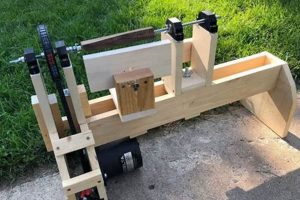
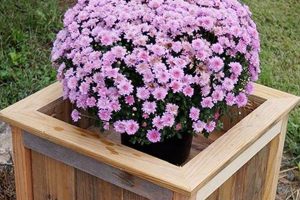
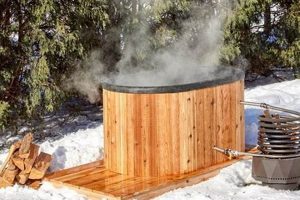
![[DIY Guide] Easy DIY Wood Window Shutters You Can Build! The DIY Hub: Creative Crafts, Repairs & Life Hacks [DIY Guide] Easy DIY Wood Window Shutters You Can Build! | The DIY Hub: Creative Crafts, Repairs & Life Hacks](https://craftingdiycenter.com/wp-content/uploads/2025/07/th-3579-300x200.jpg)
